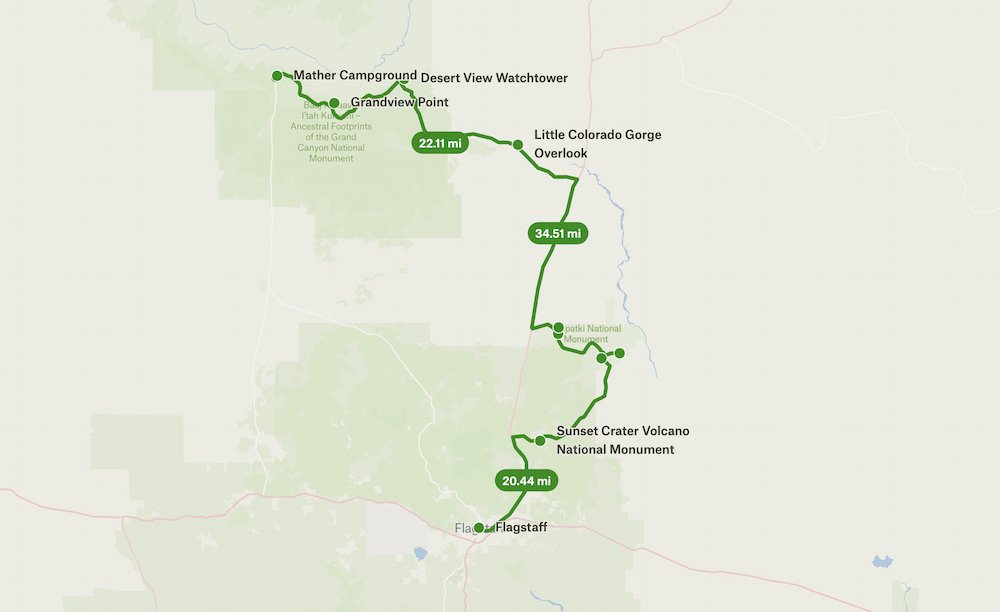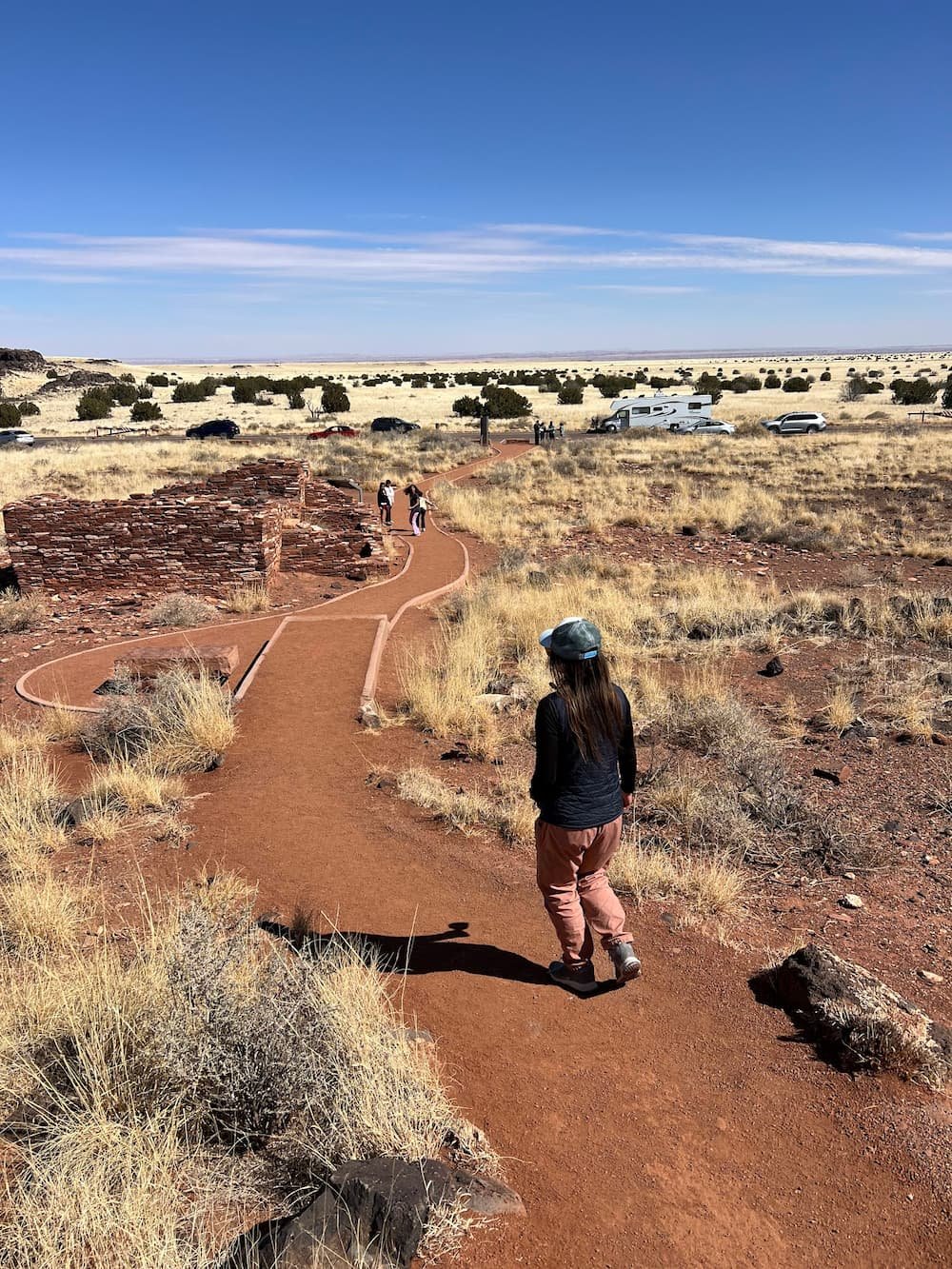We all woke up feeling the effects of a poor nights’ sleep–including Sheila, who we found had snuck up to the RV driver seat and seemed to have spent much of the night curled up there rather than in her fluffy little bed. Unfortunately the cold and the loud train noises were probably why she chose somewhere else to sleep that night, but we still managed to drive out of Flagstaff not long after our planned 9am departure time.
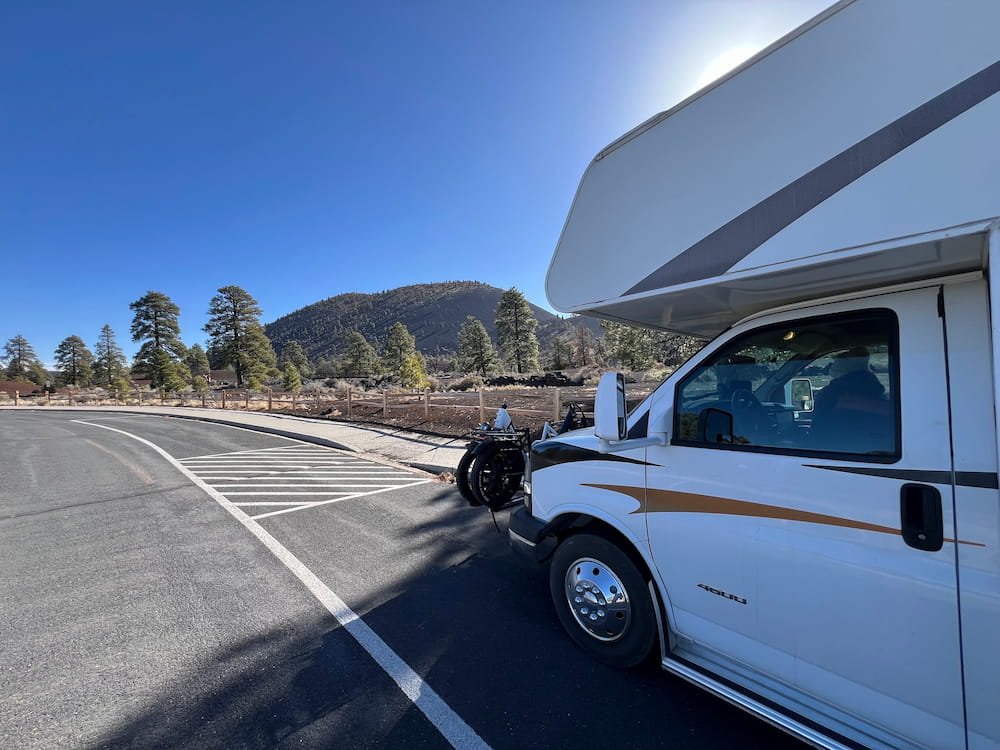
Our plan was to drive to the Grand Canyon via Wupatki National Monument, which is filled with Native American archaeological sites. To get to Wupatki, we passed through the Sunset Crater Volcano National Monument, where there are incredible lava tubes and various trails to walk among the blocks of rough, basaltic lava that formed as the Bonita Lava Flow cooled over 900 years ago.
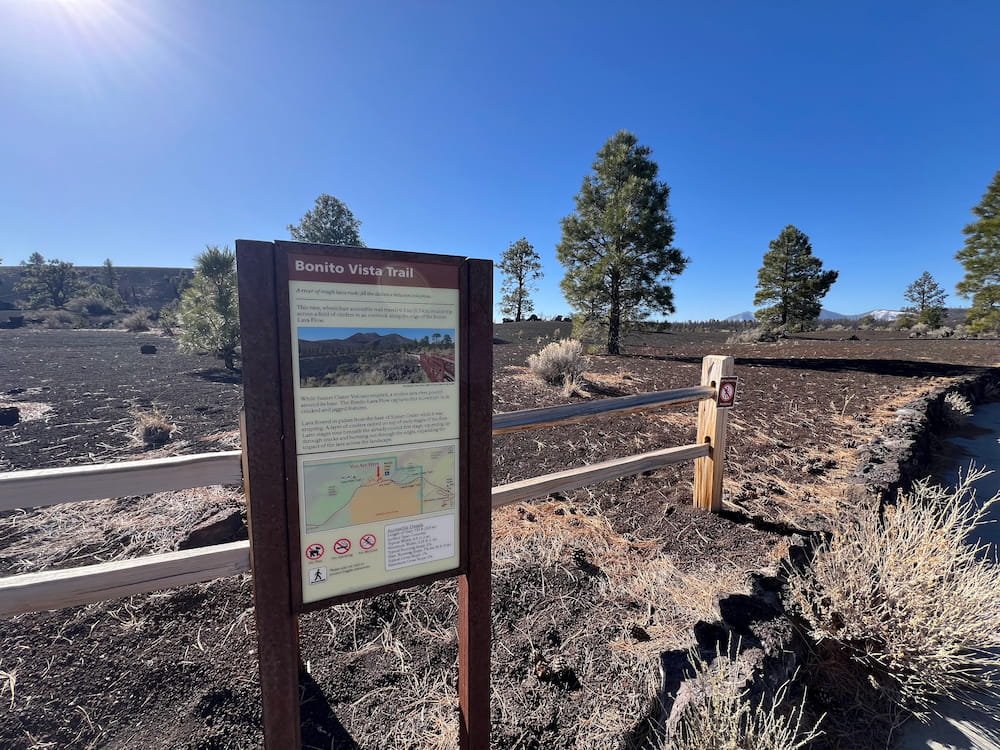
Sunset Crater is the youngest volcano in the area, exploding in 1065 AD and covered the entire region in ash. Today, there are more than 800 ruins that have been found in the immediate area, which are now protected as Wupatki National Monument.
Wupatki National Monument
Since it was the weekend, we were expecting that it’d be fairly busy at Wupatki National Monument and its surrounding areas, but it was surprisingly quiet on the roads and trails, perhaps because we were so early in the season. Wupatki National Monument has a number of fascinating archeological sites showing how Native American tribes lived on the land starting from the 1100s or so, with many settlements where you could imagine communities coming together to sell wares, pray, and conduct other rituals.

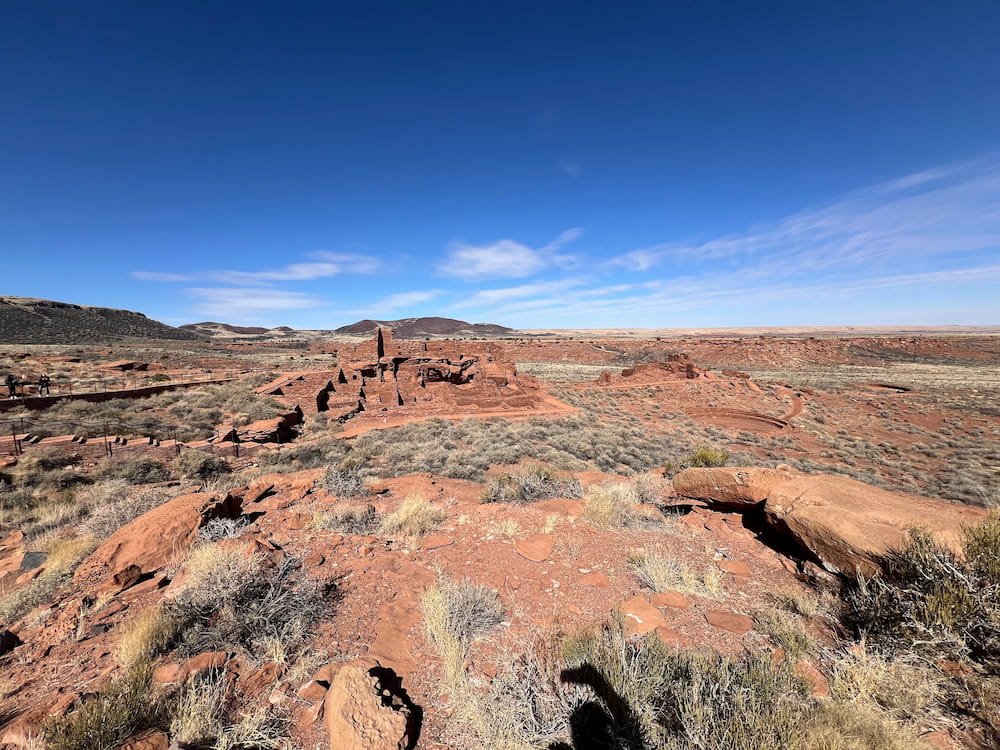

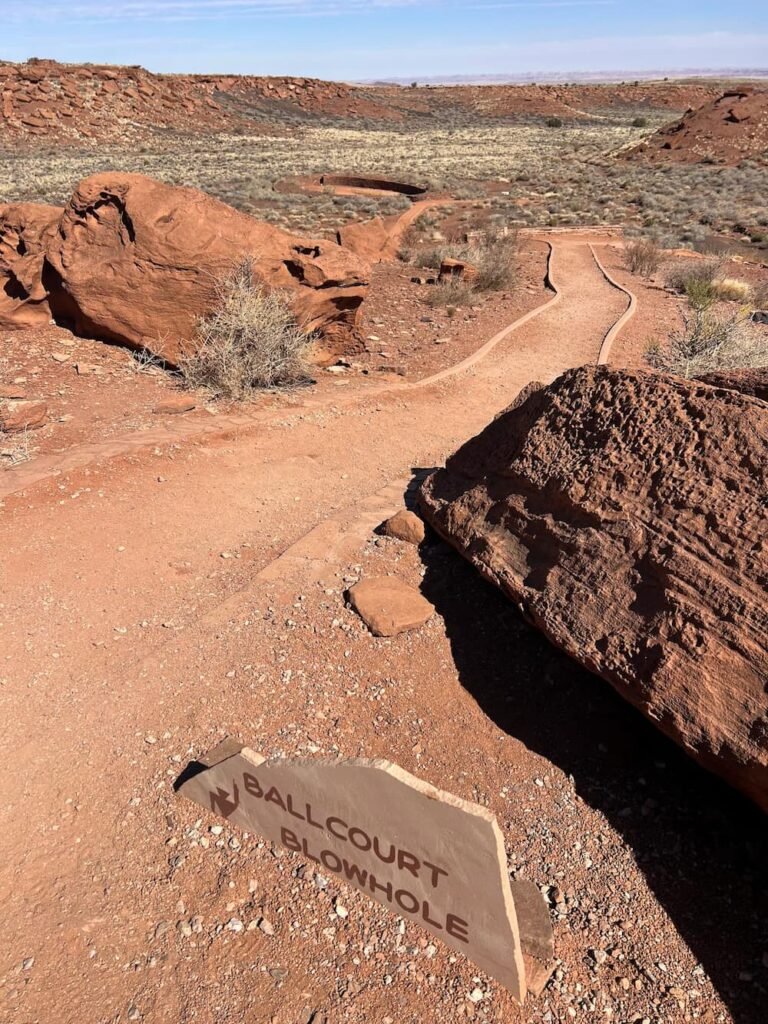
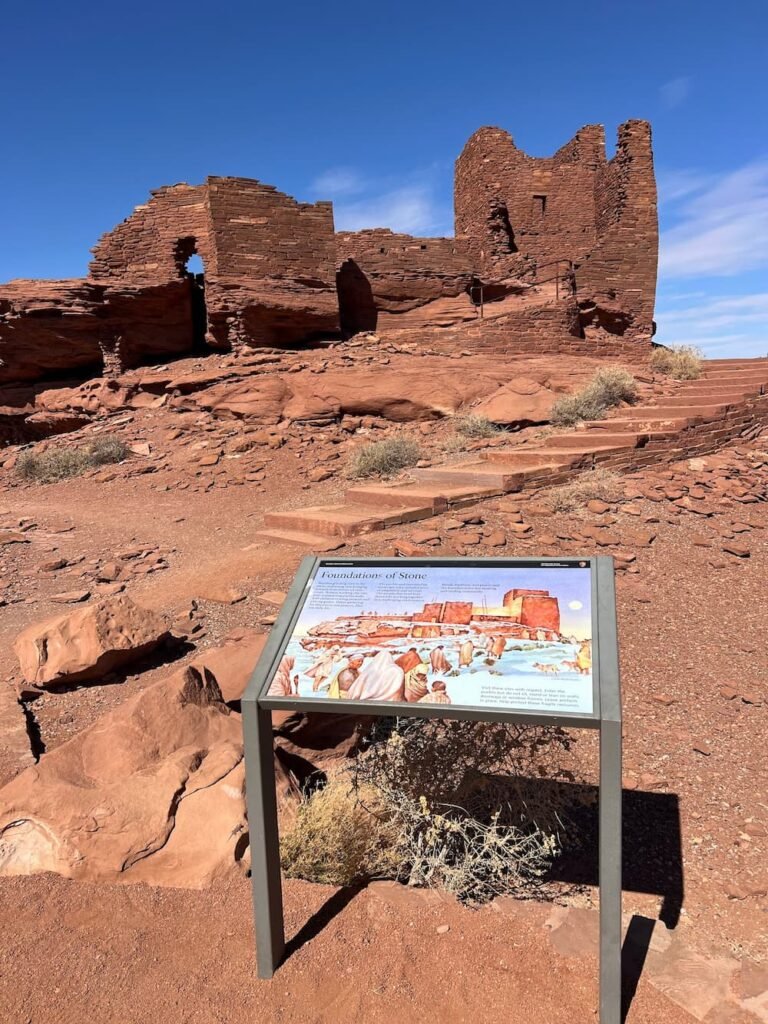
One of the highlights was Wukoki Pueblo Trail, which was built on a sandstone outcrop. This towering pueblo (Native American settlement) is unique for its structure and location, and is an easy 0.3 km (0.2 miles) round trip. Here you can also see a natural blowhole, which leads to miles of underground earthcracks. While archaeologists aren’t sure if this blowhole existed in the 1200s when the Native American tribes lived here, it was fascinating to learn about this natural phenomena and feel the air current coming in and out of the blowhole. The blowholes are spiritually significant to many indigenous people and are known by many different names. The fastest the air current has been clocked at is 48 kms per hour (30 mph).
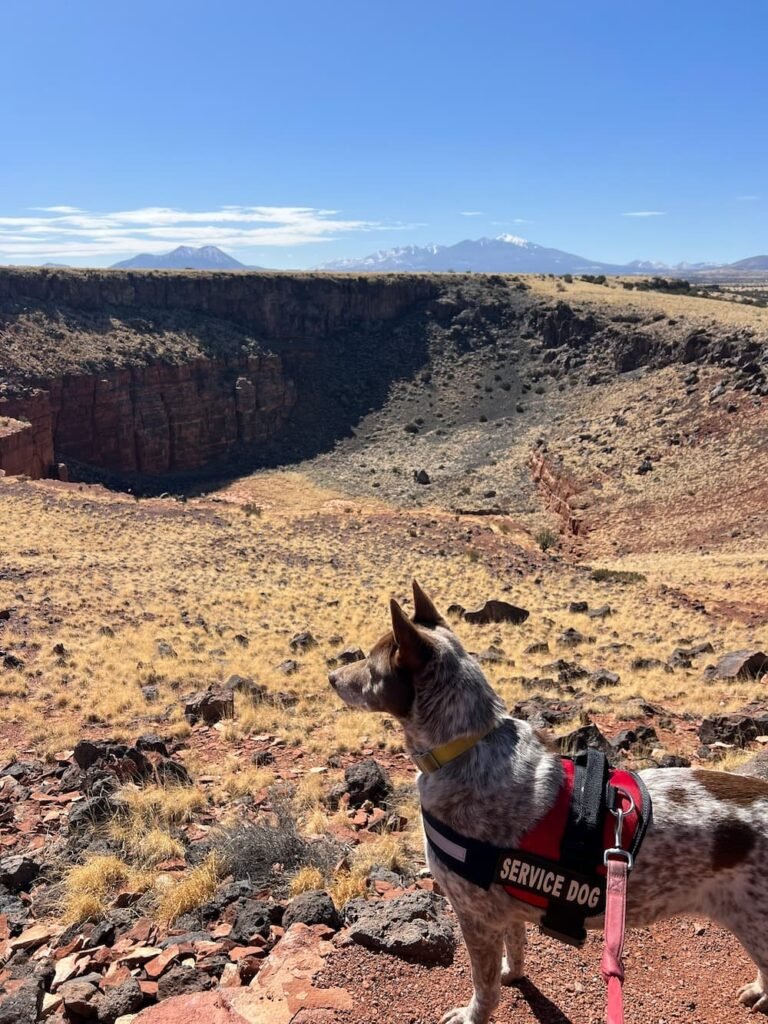
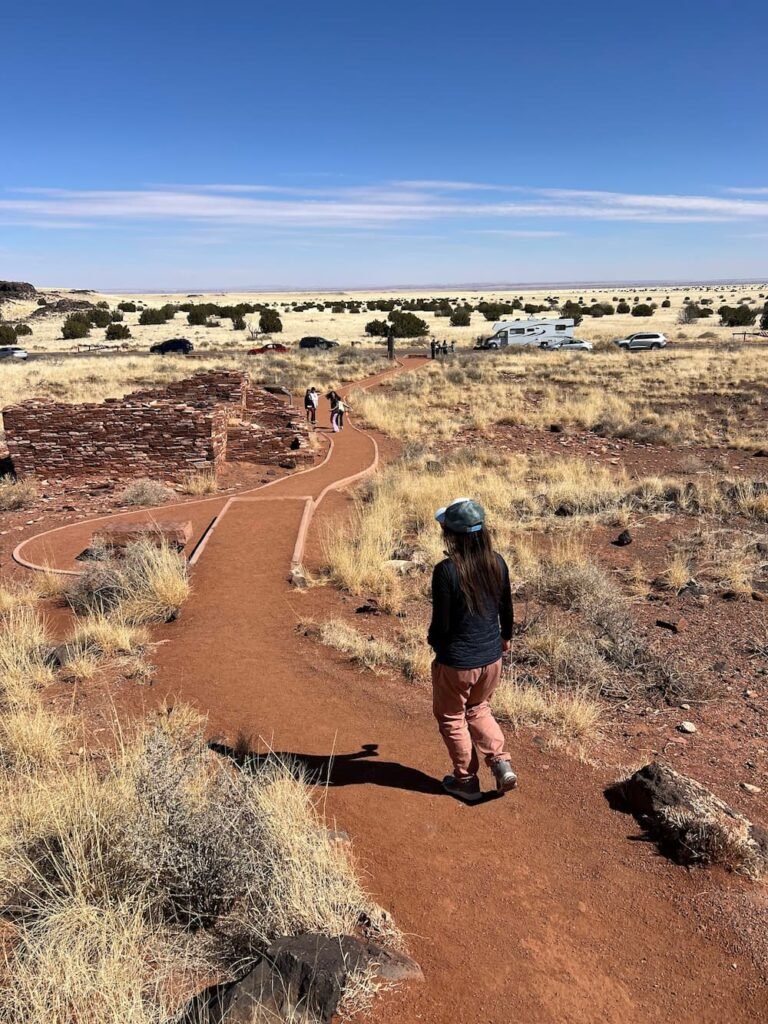
We also checked out the Citadel and Nalakihu Pueblos, where you can see panoramic views of the landscape. It’s a short walk up, and it gave us a sense of how people lived generations ago. Citadel had about 50 rooms and was strategically located overlooking a limestone sinkhole, providing opportunities to hunt animals such as deer and elk. Meanwhile, the Nalakihu Pueblo is a smaller structure that was once used as the monument headquarters in the 1930s.
Not far from Wupatki National Monument, we drove for a short distance in the opposite direction to the Grand Canyon to see the Wupatki Spirit Totem, a mysterious totem pole. If you’ve watched the Japanese anime movie “Spirited Away”, the totem has a striking resemblance to the character called Kaonashi (or No-Face). Nobody knows the origins of this totem pole, which has been around for years. It’s a blink-and-you’ll-miss-it stop at the side of the road, and a spot where people have left gifts and other tokens.
Awed By the Grand Canyon
On the fringes of the Grand Canyon entrance, we stopped at the Little Colorado River Gorge. You usually have to pay to enter, but we were staying in the Grand Canyon for their first night of the season this year, which meant that this stop also wasn’t ready for the season. Here, you can see breathtaking views of the canyon (complete with warnings to watch your pets and children due to the sheer cliff face!). We imagine that it does get busy once the season kicks off in May, as there are also multiple stalls where Native American people set up to sell jewelry and other handmade items. These were all empty except for two stalls, with the women both aiming to get a head start of the season.
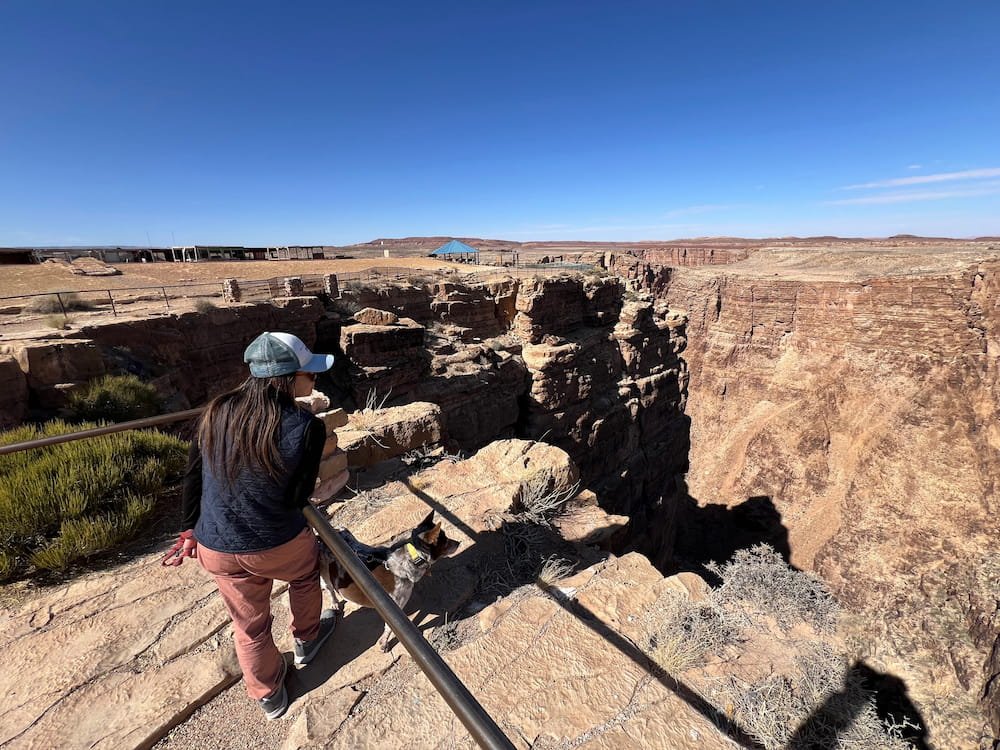
Once we arrived at the Grand Canyon, we were immediately awestruck by the views around us–jagged red rocks glistening in the afternoon sun, deep gorges going well beyond our line of sight, and desert flora still carrying the weight of white snow on its leaves and branches. It’s easy to see why it’s one of the top destinations in the United States, with 5 million visitors each year.

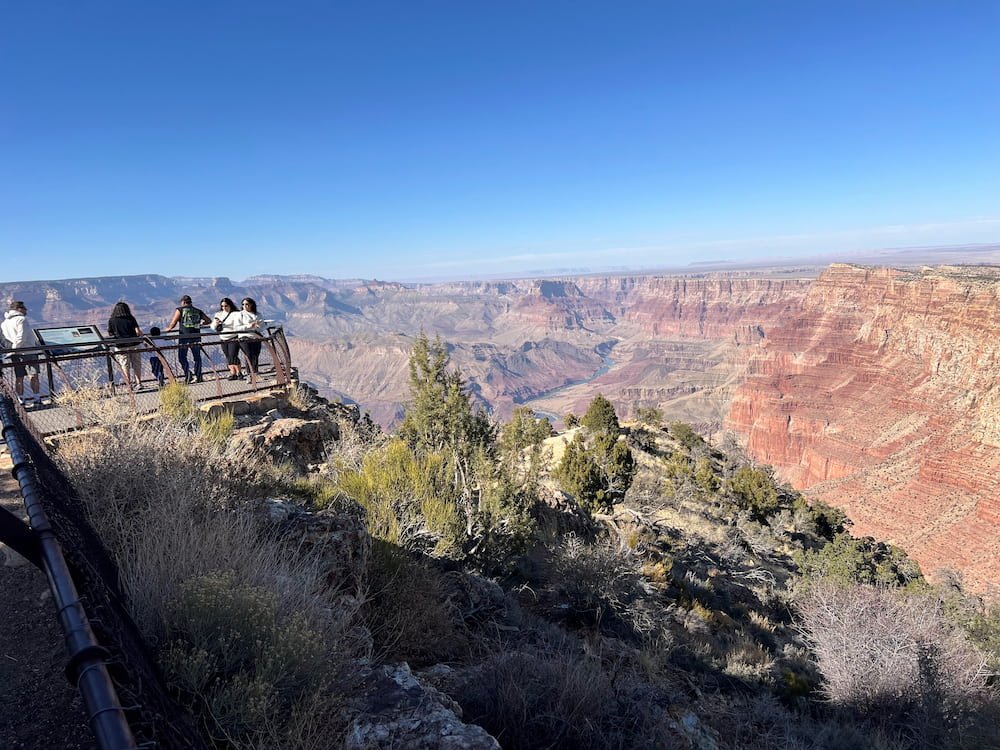
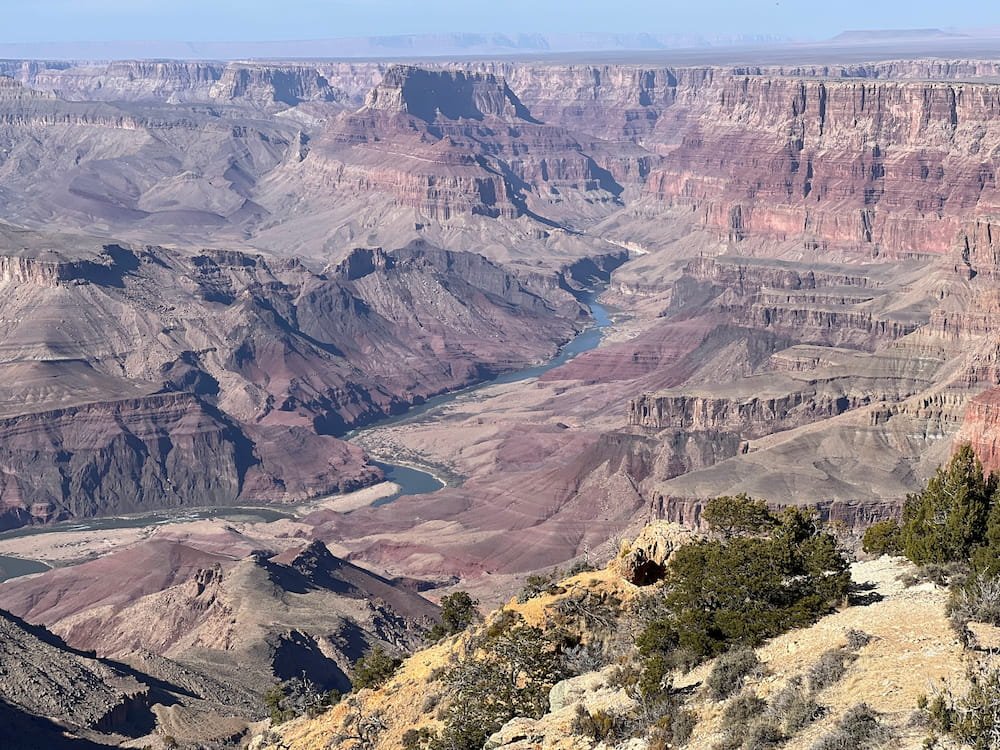
At the visitor center at the South Rim, besides marveling at the views, we also checked out the Desert View Watchtower, which is well worth the visit. To be able to go up the tower, there’s a person that stands just outside of it, who hands out free tickets to go every 20 minutes. We were fortunate to get two of the last tickets for the day, at 4pm (last tickets are available 30 minutes before the tower closes). The Watchtower was built in 1932 and was designed to resemble an ancestral puebloan watchtower. As you climb the several stories to the top (where you see majestic, 360-degree views of the canyon and its surroundings), the watchtower is decorated with bold murals as well as petroglyph-style designs.
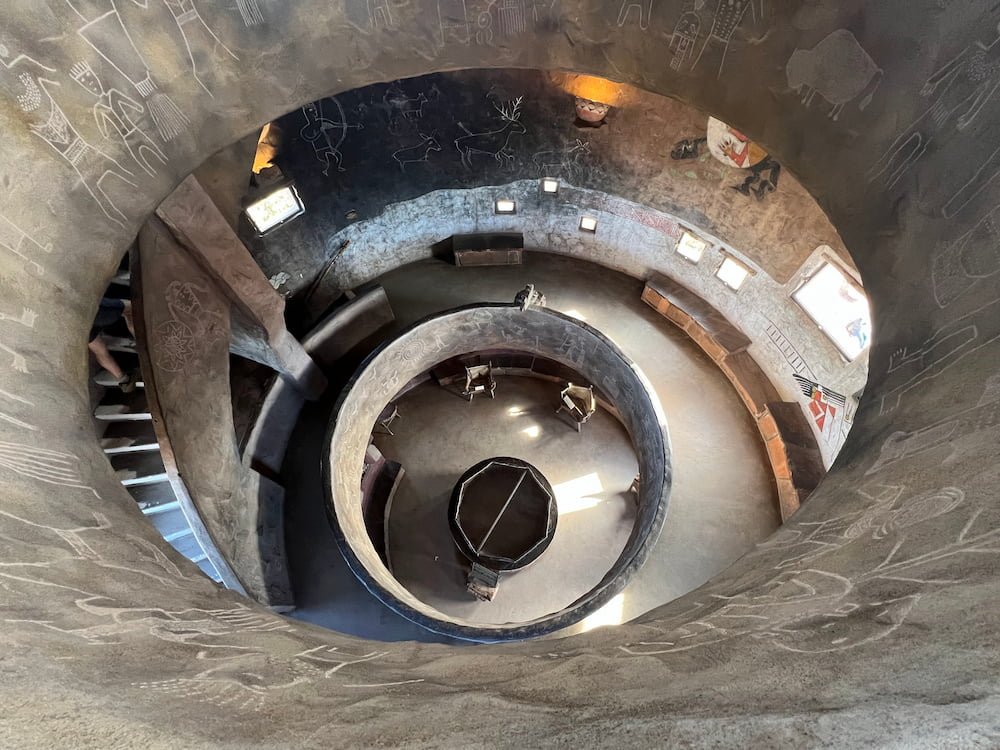
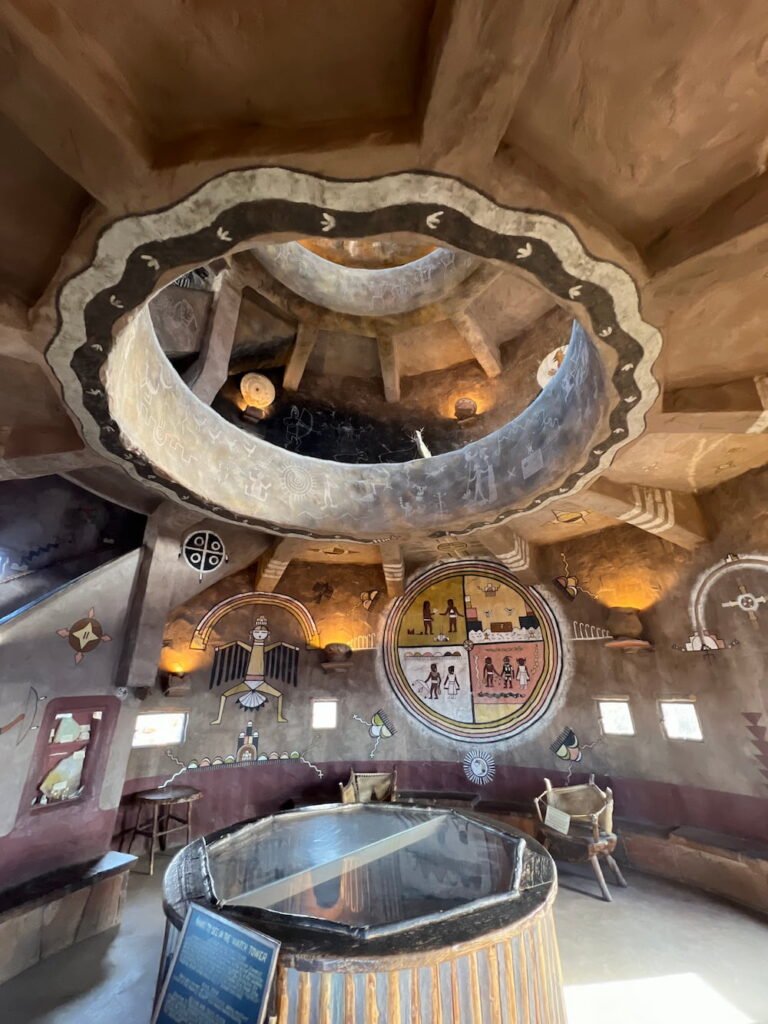
There’s also a general store and souvenir shop in the vicinity–we saw a number of people eating generously proportioned ice creams, so we also got some for ourselves. We highly recommend the spumoni-flavored ice cream–it’s not a common or easy flavor to find, but is delicious and very much reminiscent of the traditional Italian dessert!

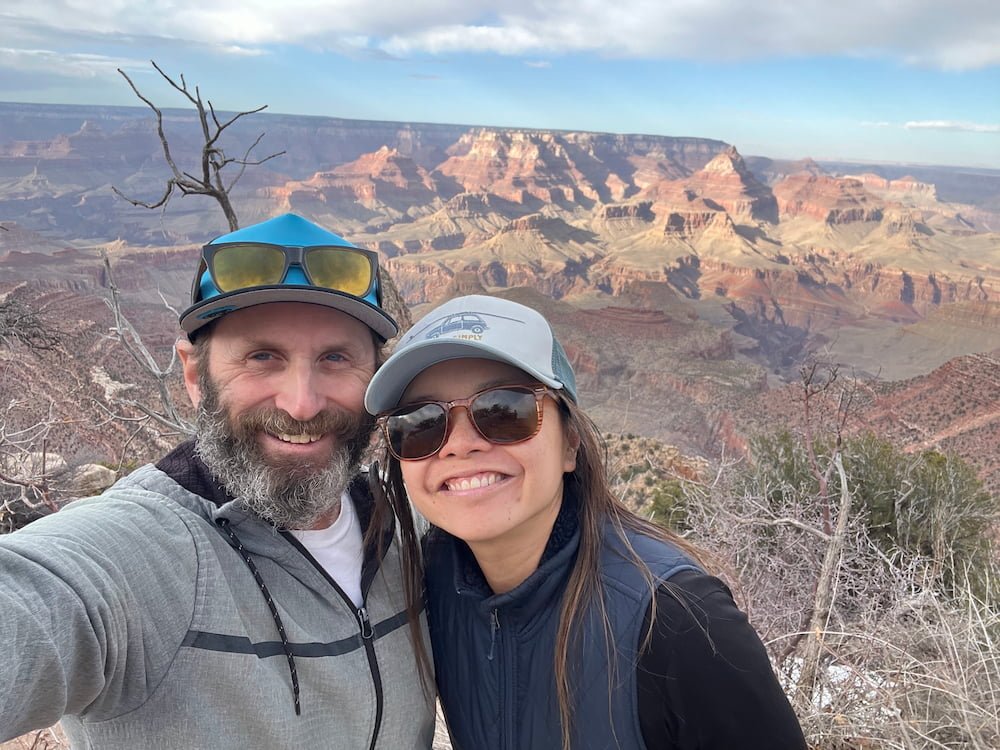
We stayed at Mather Campground, our home for the next couple of nights. We checked in for the first night of the season, and it’s a perfect, basic campground for RVs and oversize vehicles. No hookups (although this is available at Trailer Village), but there are toilets nearby. Not far from the campsite you can dump grey/black water, and also fill up on freshwater.
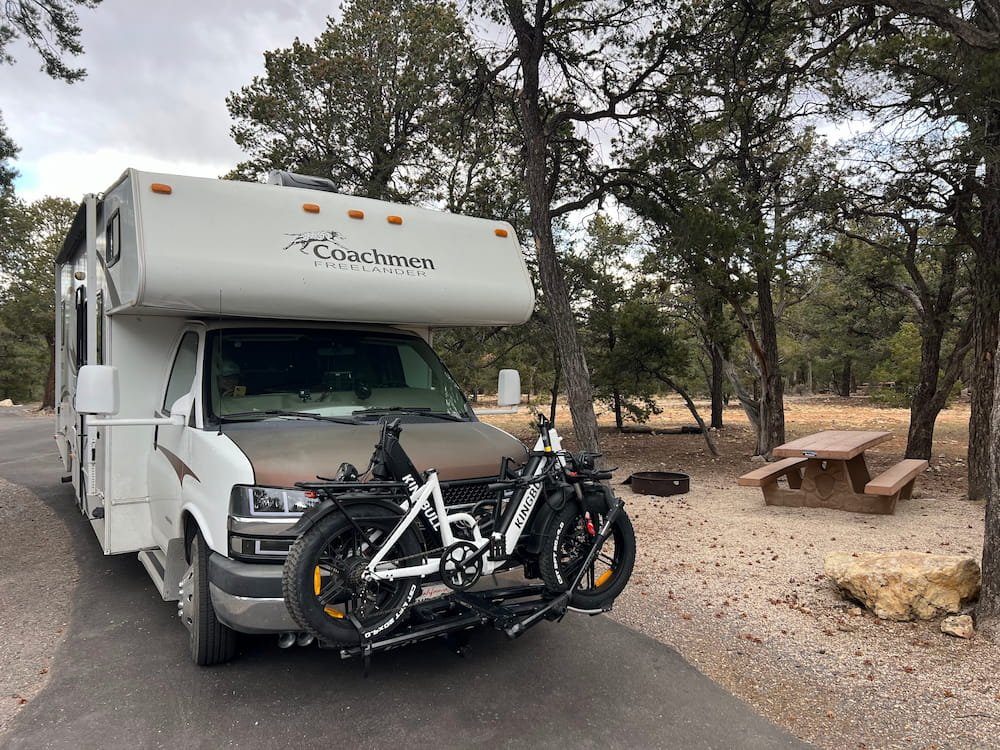
Route Map
